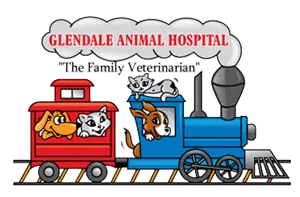PRIOR TO BREEDING:
1. Proper vaccination is not only important to protect the parents, but puppies also benefit because the mother passes this protective immunity on to them in the milk. For dogs Distemper-Parvo-Hepatitis-Respiratory and Rabies vaccinations.
2. External parasites need to be controlled.
3. A fecal sample should be checked to make sure your pet is free of internal parasites.
4. Your pet should be on good quality ration; and he or she should not be too fat or too thin.
5. It is also advisable to have dogs checked for brucellosis and heartworm disease.
6. Your female can also be checked for red-cell counts and protein levels to help insure optimal health.
HEAT CYCLES:
Most dogs start having heat cycles at 6 to 8 months of age, then cycle every 6 months. Heat cycles last 21-30 days then terminate. The beginning of a heat is noted by genital swelling and a bloody discharge. Male dogs will be attracted now, but not allowed to mate. About 7-10 days after the onset of heat, the discharge diminishes and ovulation will occur. Females will generally allow mating at this time.
For serious breeders, blood tests and vaginal smears can be taken to help determine the time of ovulation so that mating can occur nearest the optimal time. This will increase the likelihood of a pregnancy.
PREGNANCY:
1. Continue to feed a good quality ration. Smaller, more frequent feedings may be necessary as pregnancy progresses and the mother's abdomen enlarges.
2. Encourage adequate exercise daily.
3. Your pet can be checked 25-30 days after breeding to see how everything is progressing and confirm the pregnancy. After the 21st day of pregnancy a blood test can be used to confirm that your dog is pregnant. X-rays can be performed at about 45 days to determine how many babies are inside.
4. Take your pet's temperature with a rectal thermometer twice daily.
SIGNS OF LABOR:
You will notice a sagging of the breasts 2-3 days prior to birth. Her food intake will decrease and she will become more restless, and may have difficulty breathing. About 24 hours prior to labor, body temperature will drop below 100F (normal 101.5 F). Now she will probably select an area to have the babies! Make sure this area is private, warm and clean. A whelping box is ideal.
A mucus discharge will pass from the vulva and then turn to a greenish color. Contractions will soon start, and the puppies or kittens will be born.
RESIST ASSISTING UNLESS THERE ARE SIGNS OF TROUBLE; THESE INCLUDE:
1. Straining for 2-3 hours without delivering a puppy/kitten.
2. A pup which does not have the sac removed quickly after it's birth needs your help. Gently tear the sac away; tie the umbilical cord about 1" from the body with a small piece of string; gently rub the body until it is breathing on it's own.
3. Puppies will be born at variable intervals so no rule is given here. MOST DOGS DO FINE WITH LITTLE OR NO HELP! Breach births are considered normal also.
FOLLOW-UP CARE FOR MOTHER AND BABIES:
1. The mother and babies should be examined within 24-48hours of birth, and the mother given and injection to ensure that all fluids and membranes will be expelled and that all is going well.
2. Pups can be tail-docked and dewclaws can be removed at this time.
3. Food intake should be increased to as much as the mother wants, and calcium supplements (not milk) could be started at this time.
WEANING: (usually at 4-5 weeks postpartum)
The babies can start eating puppy food mixed with water at about 4 weeks of age, and gradually progress towards dry chow. After they are eating solids well, it is time to wean: Take all food, not water, away from the mother for 24 hours. Allow the babies to nurse for this 24 hours period then COMPLETELY separate the mother and babies. Give her 1/4 of her normal ration for the next 24 hours and increase this amount 25% each day until normal feeding is reestablished. When followed, this will dry up the mother completely and you can allow her to again associate with her offspring.


